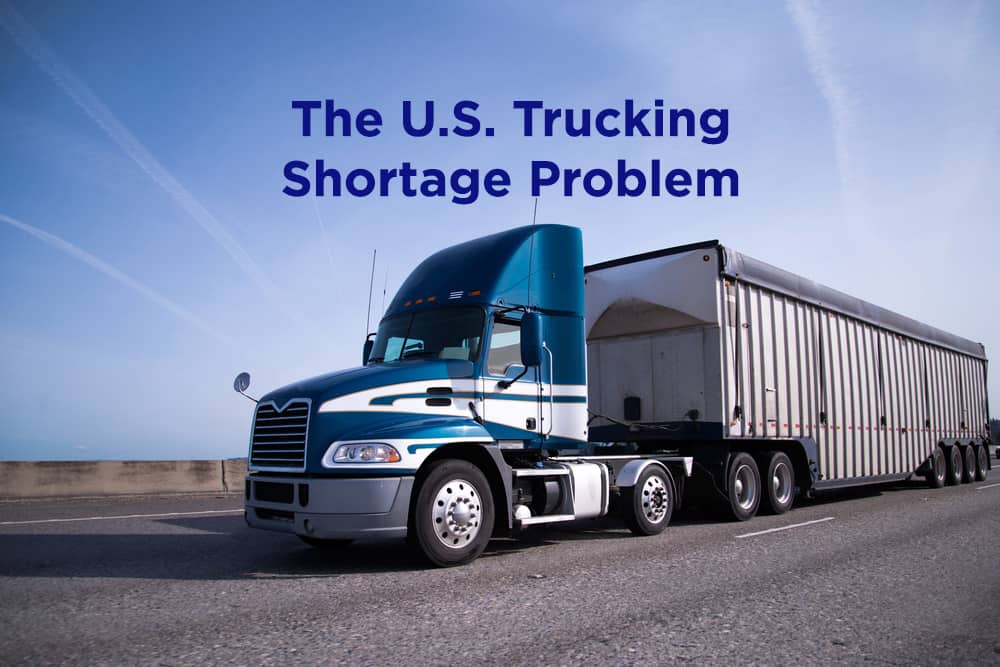Trucking is a very dynamic industry where change happens very often. There have been many changes in the trucking industry in recent years. Although those changes were well-intended, they have negatively affected the trucking industry.
As a result of these changes, negative effects are starting to hit importers. If you are regular importer, you know that in trucking, on-time deliveries may be challenging at times. However, the situation has become worse in the past few months. These days, it is in its worst shape to date. Currently, there is huge truck power shortage. Many years ago, when the clean truck initiative first started, many trucking companies simply quit the industry, as they could not afford to operate trucks that meet these requirements (an expensive investment.) The effects of so many trucking companies quitting continued for many months. There was a huge surge in truck demand in East Coast ports when the West Coast port slowdown happened in late 2014 and early 2015.
Currently, the U.S. trucking industry is facing a growing shortage of qualified drivers.
This shortage has dramatic effects on timely deliveries. There are major delivery delays of containers in many different areas. Currently, New York, Savannah, Charleston, the Ohio area, Chicago, Detroit, Memphis, and Houston are the areas where we observe the most delays. Other areas are not in the best shape, either.
What is causing the current trucking shortage crisis?
While many different factors are directly affecting the trucking shortage, the following are the major reasons for the current shortage:
- Driver shortages: According to the latest report by the American Trucking Association (ATA), in 2017, the driver shortage was around 50,000 drivers. It is projected that this number could grow to more than 174,000 drivers by 2026. According to the ATA’s Chief Economist Bob Costello, while the driver shortage is a persistent issue for the industry, motor carriers are constantly working to address it by fleets raising pay, and offering other incentives to attract drivers. Fleets are also doing more to improve the lifestyle and image of the truck driver. However, there are also policy changes, such as reducing drivers’ ages as part of a graduated licensing system, or easing the transition for returning veterans, that can make getting into the trucking industry easier and therefore help with the shortage.
- The federal mandate of new “Electronic Log Devices” (ELDs): Commercial trucks must be equipped with electronic logging devices, ELDs, which will monitor the time drivers spend on the road. This will help ensure that they don’t exceed the maximum number of hours they’re allowed to drive. The ELD rule has 3 phases. The first ELD rule was published on December 16, 2015. The second phase started on December 18, 2017, the date for complaince with ELD rules. The final phase will go into effect on December 16, 2019, when ELD usage will be made mandatory. Mandatory ELD usage is pushing more truckers away, and many companies that wait until the last minute to implement ELD will be the worst-affected.
- The job market: The current driver force is aging, and new entrances into the work force are less than exits from the job market. There are better opportunities for skilled blue-collar workers in different industries. Additionally, with a new ruling by MCSA for Entry-Level Driver Training that went into effect on June 5, 2017, certain programs and training must be completed to be a commercial driver. This may push away an even greater number of new drivers from the industry. By 2020, no entry-level drivers will be a commercial driver without taking a skills test and completing a certain amount of time for behind-the-wheel training programs.
- Increasing operating costs: Fuel costs, equipment leases, equipment purchases, repairs and maintenance, insurance premiums, permits, tolls, driver wages, and benefits are some of the items contributing to increasing operating costs.
- Infrastructure and growing congestion in U.S. Ports and Marine Terminals: After the introduction of mega vessels, many U.S. ports, especially on the East Coast, were not ready to handle such a large volume at once.
The immediate effect of the trucking shortage is delays in deliveries.
Drayage rates are expected to be pushed to higher levels in the upcoming weeks. Demurrage, detention, per-diem, and chassis charges will incur for poorly-managed dispatches. Furthermore, importers and everyone involved, need to be ready in advance for deliveries. Do not leave delivery arrangements for the last-minute. Giving a heads up to carriers might help ease the situation.
Also, an additional buffer needs to be added to cargo delivery dates. This whole situation is not expected to get better anytime soon, but with advance planning, open communication, and an understanding of the reasons behind what’s going on, you will be able to better manage delays, and other issues.
- 174shares
- 140LinkedIn




